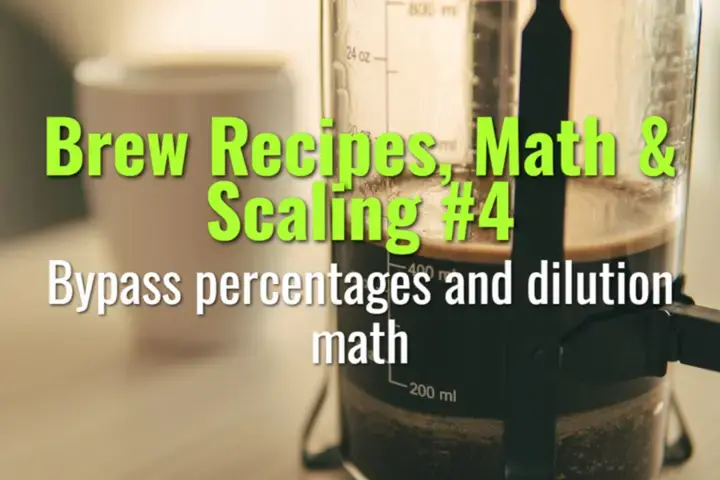Bypass percentages and dilution math
How to calculate and apply bypass water (dilution) in coffee brewing, and how bypass percentages affect strength and extraction perception.
- Coffee Basics Nerds
- 2 min read
Article 4 of 12 in Brew Recipes, Math & Scaling/

What is Bypass?
- Bypass water = water added to brewed coffee after extraction.
- Used to adjust strength (TDS) without changing extraction yield (EY).
- Common in batch brewers with automatic bypass valves or in manual recipes like AeroPress dilution.
Bypass Percentage Formula
- Bypass % = (Bypass Water ÷ Total Beverage Weight) × 100
- Example: Brew 500 g, add 100 g bypass → 100 ÷ 600 = 16.7% bypass.
Dilution Math
- TDS is reduced proportionally to added water:
- Final TDS = (Original TDS × Original Beverage Weight) ÷ (Original Beverage Weight + Bypass Water)
- Extraction yield remains unchanged, since no new solubles are extracted.
Why Use Bypass?
- Flavor Balance: Maintains extraction chemistry while adjusting strength.
- Flexibility: Allows stronger brews (higher EY, higher TDS) to be diluted into preferred sensory zone.
- Control: Prevents under-extraction that happens if you weaken coffee by grinding coarser or reducing dose.
Practical Applications
- Batch Brewers: Some machines bypass part of the brew water around the grounds to optimize extraction.
- AeroPress/Immersion: Brew strong concentrate → dilute to target strength.
- Espresso/Americano: Classic bypass example: concentrated espresso + hot water.
Example Workflow
- Target: 1.35% TDS filter coffee.
- Brew: 22 g coffee → 300 g water → 2.0% TDS concentrate.
- Dilution: Add 150 g hot water.
- New beverage: 450 g at ~1.35% TDS, EY unchanged.
Summary
Bypass and dilution math help brewers fine-tune strength independently of extraction. Calculating bypass percentages ensures repeatable adjustments, letting baristas serve coffee at ideal balance without compromising quality.